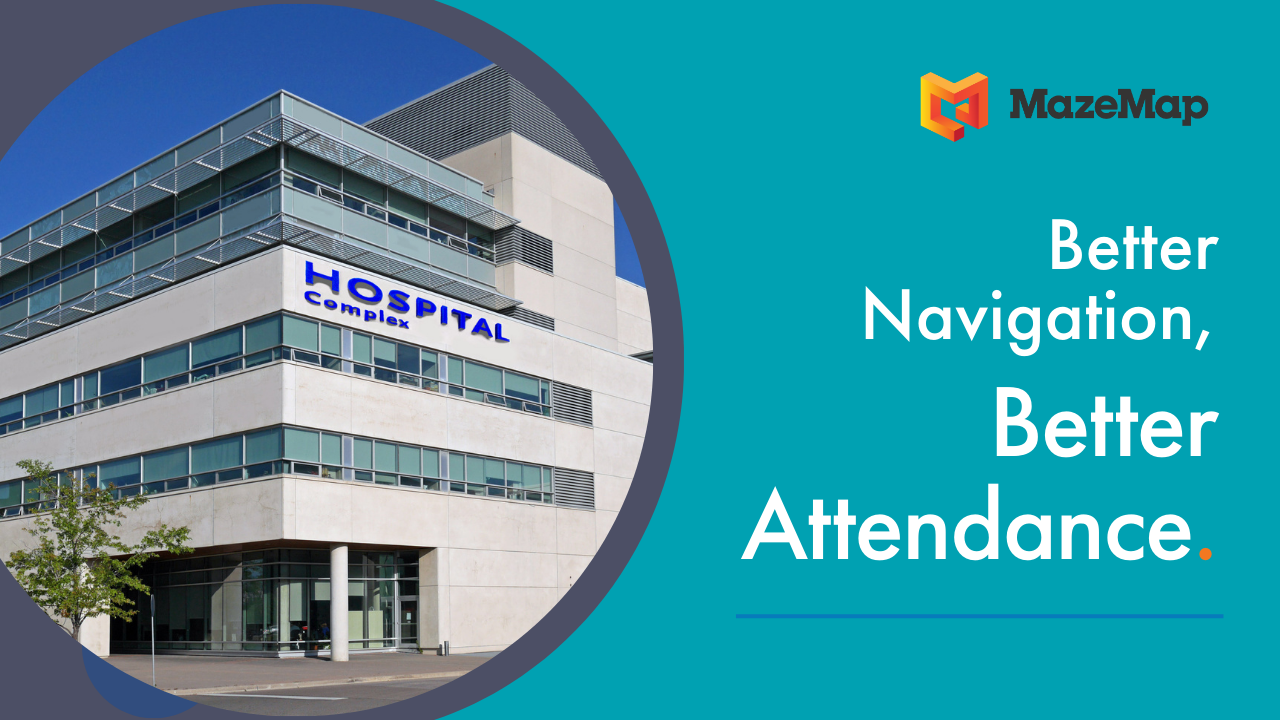Imagine this: A fire breaks out in a hospital, but the emergency exit signage is unclear. Staff and patients struggle to find the nearest safe route. Regulators step in, and the hospital is hit with a hefty fine for non-compliance—not to mention the potential legal liabilities.
Or picture this: A patient in a wheelchair arrives for an appointment but encounters unexpected barriers due to poor accessibility mapping. A complaint is filed, and suddenly, your hospital is under scrutiny for violating ADA (Americans with Disabilities Act) or EU accessibility regulations.
For Facilities Managers, compliance isn’t just about paperwork—it’s about patient safety, operational efficiency, and protecting the hospital’s reputation.
This is where digital mapping technology comes in. By digitizing hospital wayfinding and compliance-related mapping, facilities managers can ensure regulatory adherence, reduce risks, and improve patient and staff experiences.
The Cost of Non-Compliance in Hospitals
Ignoring compliance-related wayfinding issues can lead to:
· Fines & Legal Risks: Regulatory bodies like The Joint Commission (U.S.), NHS Estates (UK), and the European Health, Safety & Environment Regulations have strict wayfinding and emergency preparedness standards. Violations can result in hefty fines.
· Safety Hazards: Inaccurate maps and poor signaling can cause dangerous delays during emergencies. Every second counts in a fire, natural disaster, or active shooter situation.
· Accessibility Complaints & Lawsuits: Patients and visitors with disabilities must have clearly mapped accessible routes to avoid ADA or EU Disability Rights Act violations.
· Operational Disruptions: Staff members waste valuable time searching for restricted areas, safety exits, and emergency stations. This inefficiency affects patient care.
Compliance isn’t just a checklist—it’s a high-stakes issue that impacts patient safety and hospital efficiency.
How Digital Mapping Ensures Compliance & Safety
1. Emergency Preparedness & Fire Safety
Regulators require hospitals to have clearly defined emergency exits, fire escape routes, and muster points. However, static maps and outdated signage fail to provide real-time guidance during emergencies.
Solution: Digital mapping provides interactive, real-time emergency evacuation routes that update dynamically. Staff and patients can access the most efficient, unobstructed exit routes via mobile phones, digital kiosks, and wayfinding displays.
2. Accessibility Compliance (ADA & EU Standards)
Hospitals must ensure barrier-free access for patients with disabilities. This means having:
· Clearly marked wheelchair-accessible routes
· Elevators and ramps highlighted on digital maps
· Audible guidance for visually impaired patients
The problem? Many hospitals rely on outdated, static maps that don’t reflect accessibility-friendly routes. Patients with disabilities often struggle to navigate complex hospital layouts.
Solution: Smart maps automatically display the best ADA/EU-compliant routes, taking real-time conditions (e.g., broken elevators, construction zones) into account.
.jpg)
3. Hazardous Zones & Restricted Area Compliance
Hospitals have biohazard zones, radiation areas, and restricted medical storage facilities that must be clearly marked. Regulatory bodies require accurate mapping of these zones to prevent unauthorized access.
Solution: Smart mapping platforms allow facilities managers to:
· Digitally mark restricted areas and provide access-based navigation for staff.
· Ensure hazmat locations are clearly labeled and regularly updated.
4. Real-Time Updates for Regulatory Changes
Static maps become outdated fast. A new hospital wing opens, an exit is temporarily closed for renovations, or new safety regulations require different signage placement.
Solution: With smart mapping, facilities managers can update maps instantly, ensuring:
· Up-to-date compliance with fire safety and emergency regulations
· Dynamic rerouting when construction disrupts existing pathways
· Real-time notifications sent to staff about compliance-related changes
The Business Case for Smart Mapping: Cost vs. ROI
Some Facilities Managers worry about the cost of implementing smart mapping technology, but the reality is:
Cost of Non-Compliance
- Fire safety violation fine: $15,000+
- ADA accessibility lawsuit settlement: $50,000+
- Operational inefficiency cost: Hundreds of lost staff hours per year
ROI of Smart Mapping
- Reduction in compliance fines: Up to 80%
- Increased patient satisfaction: Higher hospital ratings = better funding
- Improved staff efficiency: Time savings translate to lower operational costs
Compliance is more than just a legal requirement for facilities managers; compliance isn’t just about avoiding fines—it’s about ensuring a safe, accessible, and efficient hospital environment. Want to see how digital mapping and wayfinding can keep your hospital compliant? Book a free demo today! Share this article with a Facilities Manager who needs this information!











